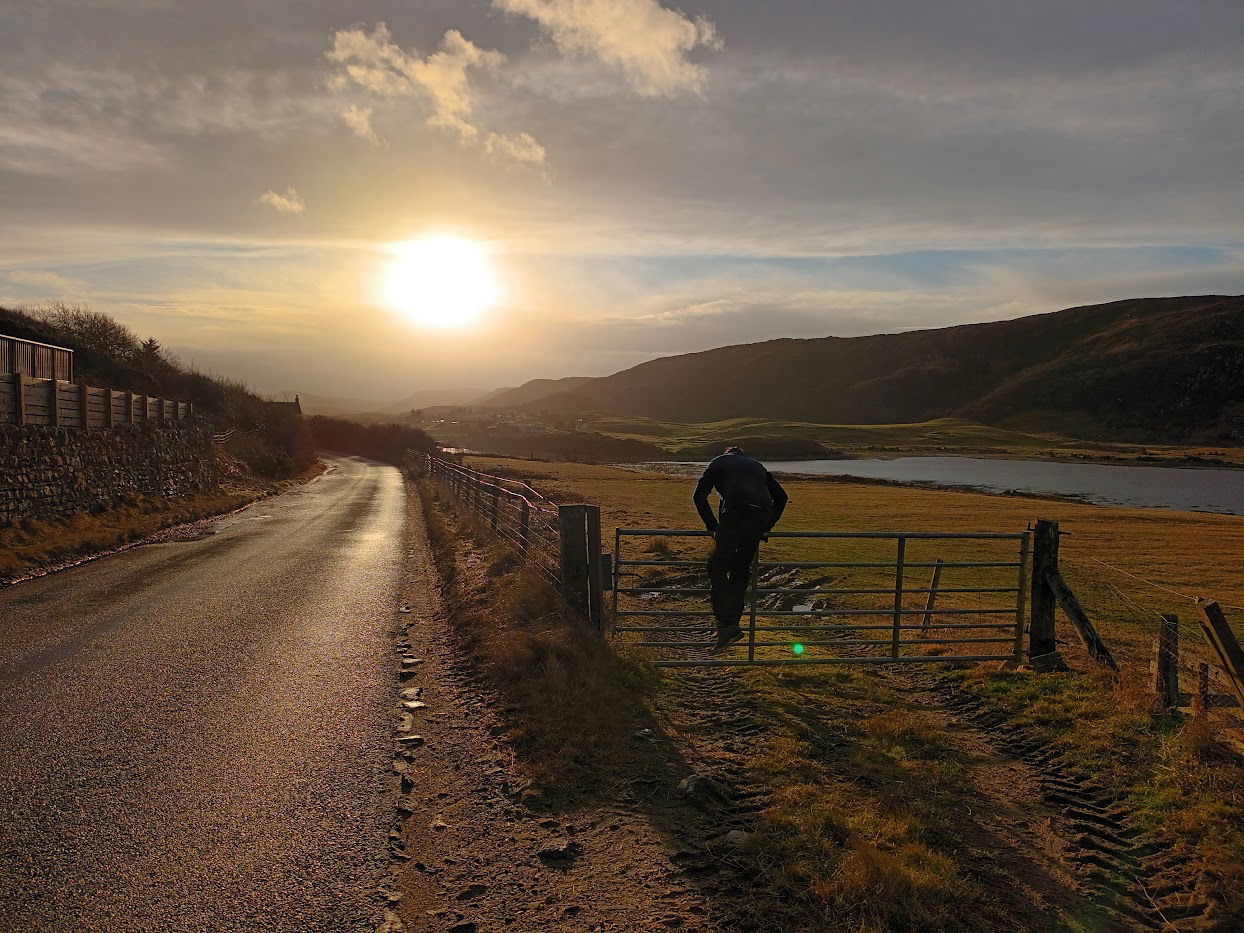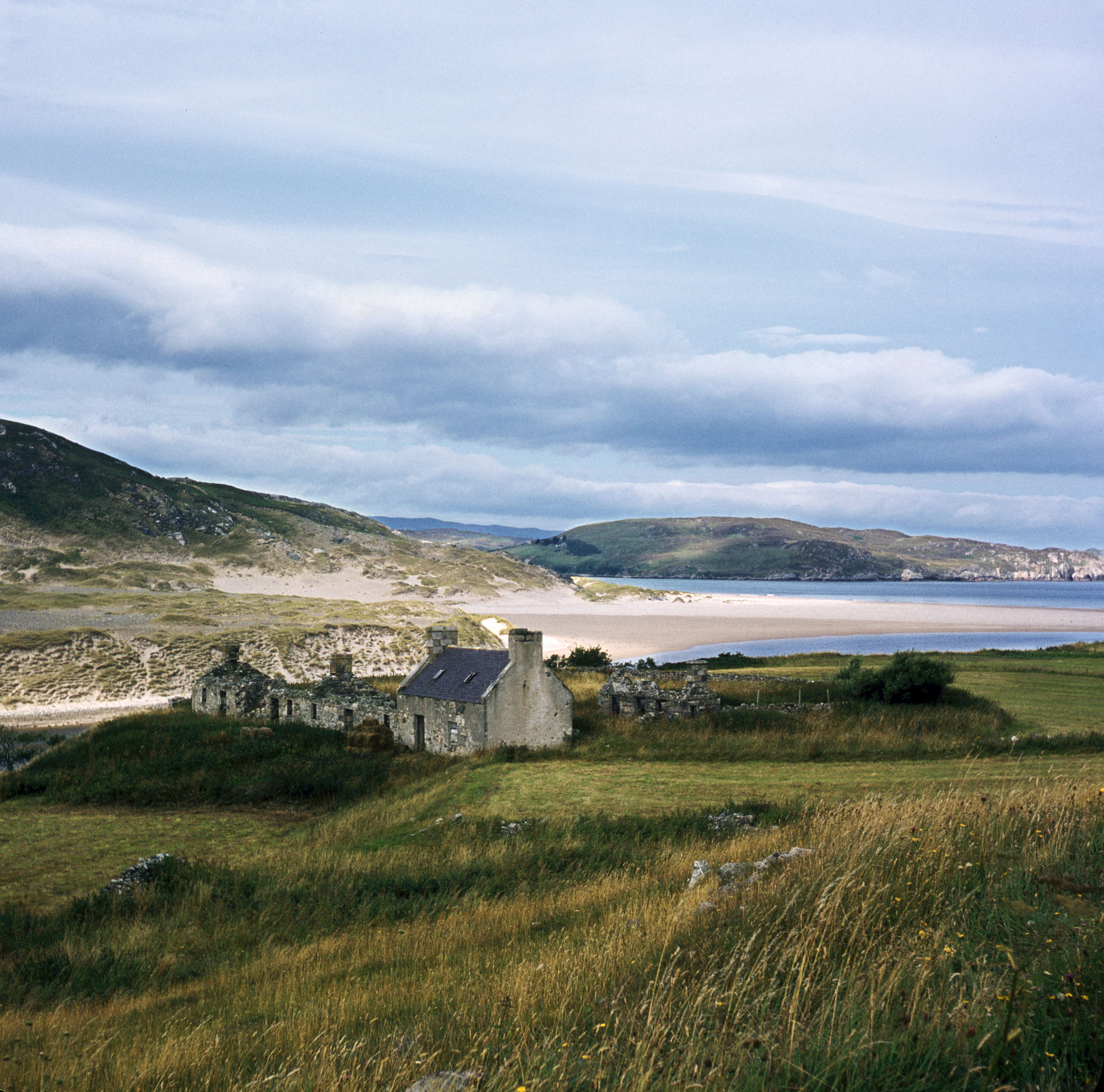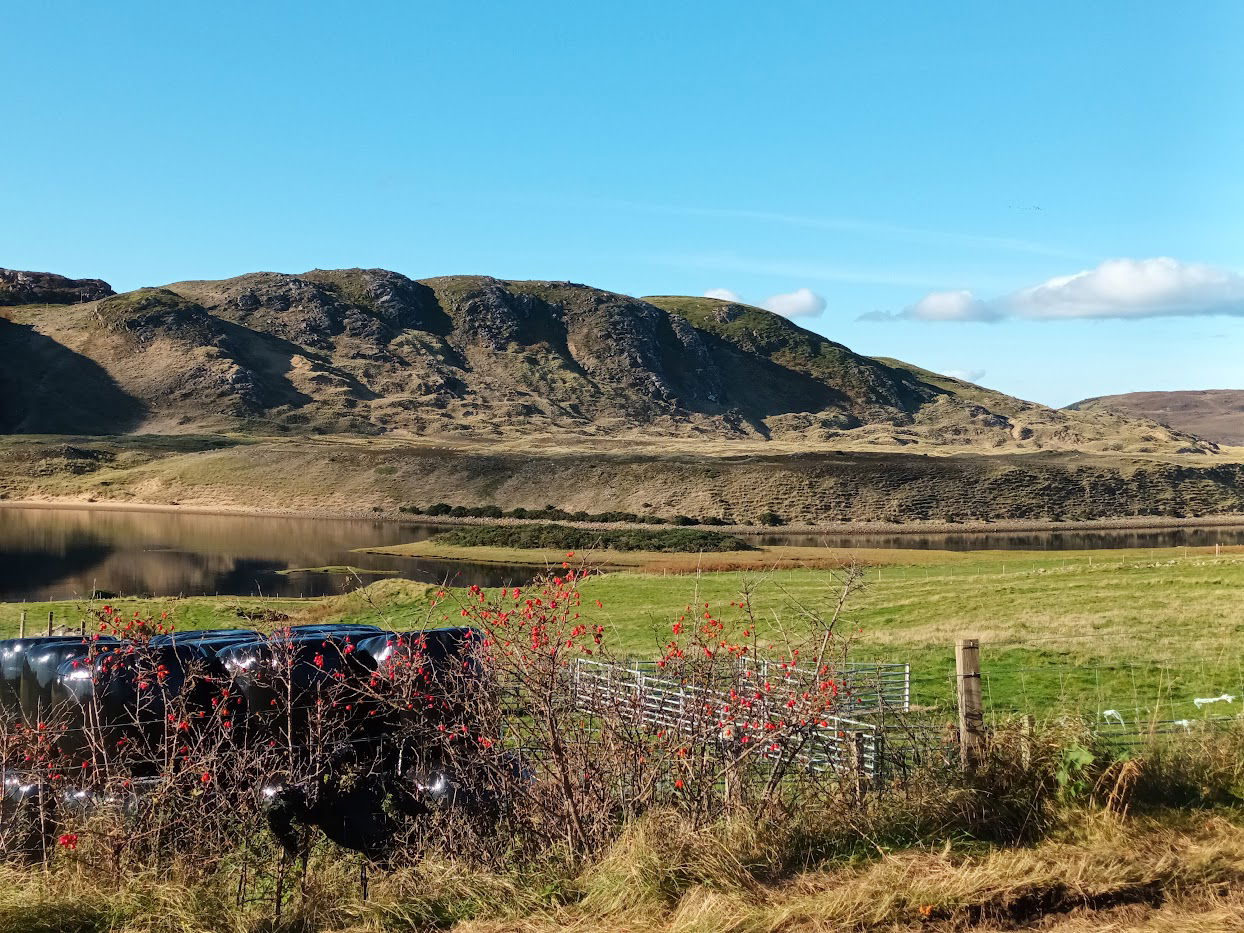The View - What Can I See From The Cottage
The View

The view from The Captains is undeniably spectacular and forever changing. Why bother trying to pick useful and relevant information out of a national weather forecast when you will find sticking your head out of the door much more reliable, whether that is to see the clouds building up along Strathnaver to the south, or seeing if the onshore breeze will be clearing the morning mist any time soon! But, arguably the best time to turn your eyes to the sky is at sunset.

During July and August, on a clear night, you can enjoy the free-to-view spectacle of the sun setting over the sea at the tip of the distant headland. And during the winter months, the low trek of the sun over the peaks to the south offer another dazzling delight.

The road directly in front of The Captains is the A836, and is part of the famous driving route, the NC500. As an important local route, this single-track road is used by locals heading to Thurso for shopping and work, crofters moving their tractors from field to field, occasionally logging trucks heading to the port at Scrabster, tourists and campervans completing the NC500 and intrepid cyclists often heading to John O'Groats. A wave to the passing traffic is usually rewarded with a smile and wave back and sometimes a pause for conversation, as this A road has a more leisurely pace of life than many other A roads across the country.

Directly on the other side of the road is a rose bush, a relic from The Captains garden from before the road was rerouted during the Depression in the 1920s.
Beyond that is a crofters field, often with a small stack of silage bales ready to feed the livestock through the winter. Sometimes there may be sheep in the field and sometimes rabbits, and occasionally molehills indicate the presence of the subterranean mammals that frequent the area.
Off to the left, on a high point in the adjourning fields is "The Street", a small collection of ruined crofters cottages. Nobody seems to know how such a small settlement gained the grand name of "The Street" but it is believed that these 3 or so dwellings were poor houses, inhabited by people of low or no income but ultimately abandoned in the mid-twentieth century when the lack of connection to amenities made living conditions unacceptable. Having been up for sale for several years now, maybe one day they will be redeveloped but for now they make a charming focal point from The Captains to the view out to sea.

At the bottom of the field is the pebbly shore of the River Naver as it opens out into the the Naver Estuary. Whilst staying at The Captains, you will never have to struggle to work out the state of the tide as the ebb and flow is plain to see with the filling in of the river valley, sometimes rising high enough to go around the back of the island that the telegraph pole is on, and sometimes dropping so low as to suggest that Torrisdale Beach is only a short walk away.

Once supporting a thriving salmon fishery, it is still possible to occasionally see fish jumping in the river, although it is rarely possible to catch a long enough look to work out the species. Certainly it is enough to attract the attention of otters and raptors such as osprey, which you may also spot with a bit of luck and a pair of binoculars. The estuary also hosts sea birds such as oyster catchers and curlews, and their distinctive peeps and calls make up part of the background music of this landscape.
On the other side of the river, between the present day pebbly and sandy shore and the hillside is a raised terrace comprising gravelly deposits. This is a raised beach - an old beach created by the sea-level of a few thousand years ago. Up here you can see the vague remains of ancient civilisations, although not from this distance.

The hillside itself is made up of the Moine Series hard and attractively banded metamorphic rocks which you will see all over this landscape and as rocks and pebbles on the beaches. Grazed by sheep and deer, the vegetation is kept short and mostly devoid of trees, but offering the opportunity for unusual and rare flora to thrive on the thin layer of acidic soil over the rocks. Just off to the left of the stream that runs down the hillside opposite The Captains, and slightly lower than the top of the hill, is an ancient bronze-age broch, but it is so camouflaged within the landscape that even when you know where to look, you can't see it but it is worth a visit if you wish to make the climb. And from there, you can look back towards The Captains and see the setting of this delightful cottage from a whole new perspective.
